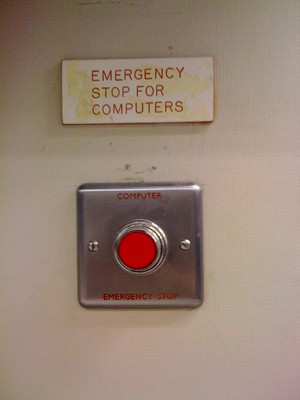 Providing students with instructions on what to do in an emergency is always a good idea. It’s even more important now as all classes are moving online and many students are relying on technology resources more than they are used to.
Providing students with instructions on what to do in an emergency is always a good idea. It’s even more important now as all classes are moving online and many students are relying on technology resources more than they are used to.
You may be thinking, “Oh, I will wait and deal with trouble if it comes up.” It’s nice to be optimistic, but trust me, eventually something will come up. You may not think of it as an actual emergency, but a panicked student may. Add the complication of the sudden reliance on resources students don’t have experience with, and the panicky emails are sure to start filling your inbox.
How to Address Emergencies Before They Happen
- Brainstorm a list of the basic hurdles students are likely to encounter. Consider the issues that have occurred in previous courses you have taught, and reflect on challenges you and those you know have had as they work online. Combine any challenges that will have similar responses (see the example below).
- Outline what students should do in each situation. Include specific details that will walk students through their response. Students coming to this list are anxious. They not catch the nuances of what you say, so be sure that everything is clear and concrete.
- Emphasize trust and calm in your explanations. Let students know that you take their situation seriously. Maintaining a sense of calm will do much to solve the challenge. Panic can make everything worse. If you persuade students to remain calm and trust that you will help them, reasonable solutions to the problems will become easier to accept.
An Example Policy
Here’s a version of the emergency policy that I use with my courses. The policy (like all content on this site) is content is licensed under a Creative Commons Attribution-NonCommercial Share-Alike 4.0 International License; thus, you can copy and customize the policy to use with your course.
Emergency Policy for Technical Writing
 Problems with vt.edu websites, LinkedIn Learning, or Canvas
Problems with vt.edu websites, LinkedIn Learning, or Canvas
If something goes wrong with one of the websites we are using, don’t panic. Send me an email message, since I may not know there is a problem. I will fix it if I can, and if necessary, I’ll adjust any due dates or expectations. If appropriate, contact 4-Help and explain the situation as well. Once you have contacted me, keep working as you can until the situation is resolved.
Problems with something in your world
If something goes wrong for you personally, send me an email message explaining the issue and relax. We can come up with a solution. Things such as a broken computer or a change at work that messes up your schedule fall in this category. Getting sick or having an accident (such as a broken bone) also fall into this category. Your situation may feel horrible, but we can work it out. Don’t worry if I don’t respond immediately. It just means I’m not at my computer.
Emergencies and the 911 policy
If you have an emergency, first take care of any immediate danger. Make sure everything and everyone is safe before you worry about this course. When you can, email me and begin the subject with 911. For example, a subject line might be “911 Struck by Storm.” Give me the details in the message (e.g., The storm knocked out your power. Your work is going to be delayed until things are fixed). Save these 911 messages for emergencies please. I give 911 messages priority and answer them ASAP. Again, don’t worry if I don’t respond immediately. It just means I’m not at my computer. When I get back online, I will do whatever I can to help.
Photo: Emergency Stop by Daniel Nisbet on Flickr, used under a CC-BY-SA 2.0 license. Keep Calm and Carry On Poster, from the UK Ministry of Information, used under a CC0 Public Domain license.